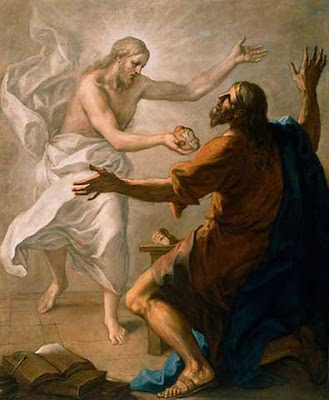 |
| Niccolò Bambini Personification of Fortitude 1682 oil on canvas, installed on ceiling Ca' Pesaro, Venice |
 |
| Niccolò Bambini Personification of Glory between Prudence and Fortitude 1682 oil on canvas, installed on ceiling Ca' Pesaro, Venice |
 |
| Niccolò Bambini Personification of Prudence 1682 oil on canvas, installed on ceiling Ca' Pesaro, Venice |
 |
| Niccolò Bambini Juno offering Peacock and Thunderbolt to Venice 1714 ceiling fresco Palazzo Ducale, Venice |
 |
| Niccolò Bambini Apotheosis of Venice ca. 1710-15 ceiling fresco Ca' Dolfin, Venice |
 |
| Niccolò Bambini Apotheosis of Venice (detail) ca. 1710-15 ceiling fresco Ca' Dolfin, Venice |
 |
| Niccolò Bambini Communion of the Apostle James the Less before 1736 oil on canvas Chiesa di San Stae, Venice |
 |
| Niccolò Bambini Abduction of the Sabine Women before 1736 oil on canvas Museo del Settecento Veneziano, Ca' Rezzonico, Venice |
 |
| Niccolò Bambini Achilles discovered among the Daughters of Lycomedes before 1736 oil on canvas Museo del Settecento Veneziano, Ca' Rezzonico, Venice |
 |
| Niccolò Bambini Alpheus and Arethusa before 1736 oil on canvas Museo del Settecento Veneziano, Ca' Rezzonico, Venice |
 |
| Niccolò Bambini Diana and her Nymphs ca. 1710 oil on canvas private collection |
 |
| Niccolò Bambini The Three Graces ca. 1710 oil on canvas private collection |
 |
| Niccolò Bambini Stoning of Stephen ca. 1700 drawing Metropolitan Museum of Art, New York |
 |
| Niccolò Bambini Neptune and Sea Gods before 1736 drawing Morgan Library, New York |
 |
| Niccolò Bambini Danaë before 1736 drawing Morgan Library, New York |
BAMBINI, Cavaliere Niccolò, was born at Venice in 1651, and first studied under Giulio Mazzoni at Venice; but afterwards went to Rome, where he became a scholar of Carlo Maratti. According to Lanzi, he was a correct and elegant designer, with a chaste and simple principle of colouring. Sometimes he designed in the taste of the Roman school, as in his picture of San Stefano, painted soon after his return from Rome; and at others he imitated the style of Liberi, particularly in the beauty of his female heads. He died at Venice in 1736. He had two sons, Giovanni and Stefano Bambini, who painted in the style of their father.
– Michael Bryan, Dictionary of Painters and Engravers, Biographical and Critical (London: George Bell and Sons, 1886)
 |
| Niccolò Bambini Birth of Adonis before 1736 oil on canvas Musée des Beaux-Arts de Rennes |
The baby, however, so wrongly conceived, had grown in the tree-trunk
and now was trying to find a way of leaving its mother
and issuing forth. Inside its prison the pregnant belly
swelled and stretched with its load. No cries attended the birth-pangs;
no voice was left to invoke Lucina in time of travail.
But still the tree resembled a woman in labour; bent double
it groaned again and again and was drenched in a downpour of tears.
Gentle Lucina then took her place by the pain-wracked branches
and, laying her hands on them, chanted the spells that assist delivery.
Cracks appeared on the tree; the bark split open, and out
came a living baby, a wailing boy, whom the naiads at once
laid down on the soft green grass and anointed with myrrh from his mother.
A beautiful child!
– Ovid, from book 10 of the Metamorphoses, translated by David Raeburn (2004)